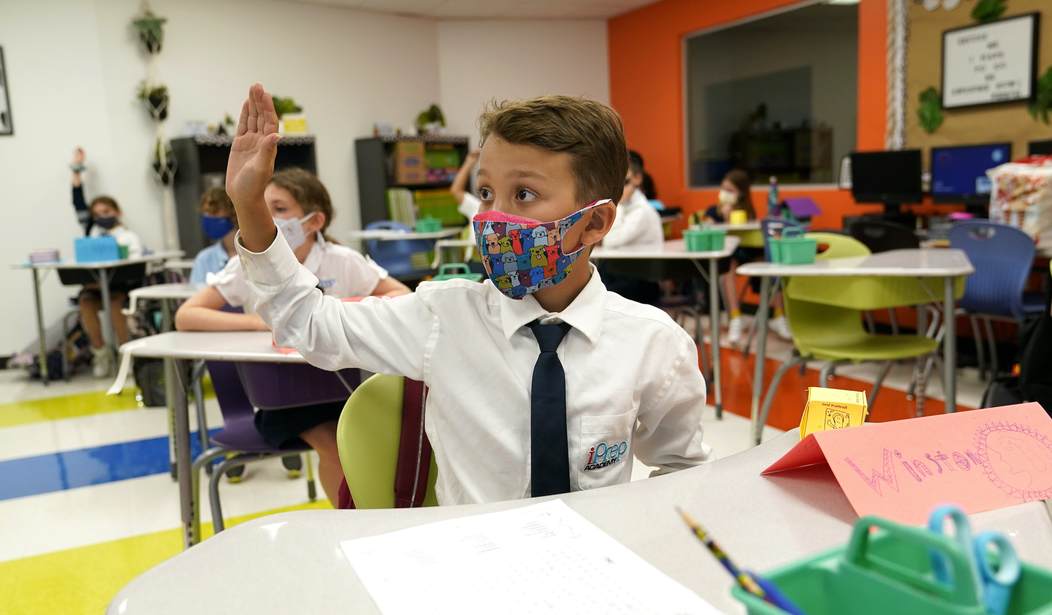Thirteen-year-old children in American public schools were not quite as good at math and reading in 2019 and 2020 as they were in 2012.
This is despite the fact that American taxpayers invested more money per pupil in the nation's public schools in each of the last two fiscal years than they did in 2012.
Bottom line: Increased spending on public education did not pay off.
In fiscal 2012, according to the Census Bureau, the United States spent $10,608 per pupil in its public elementary and secondary schools. In fiscal 2020, in the 35 states and the District of Columbia that have so far reported their totals to the Census, the per pupil spending was $14,455.
In fiscal 2019, the latest year for which the full national numbers are available, the United States spent $13,187 per pupil in its public schools.
Even when you adjust the $10,608 spent per pupil in 2012 from June 2012 dollars to June 2019 dollars, it still equals only approximately $11,841 per pupil. That means real per pupil spending in American public schools in 2019 was $1,346 more than it was in 2012.
But back in 2012, 13-year-old students in public schools scored an average of 261 out of 500 in reading on the National Assessment of Educational Progress long-term trend test. In 2020, according to the results published last week by the National Center for Education Statistics, they scored an average of 260, a decline of one point.
In 2012, 13-year-old students in public schools scored an average of 284 on the NAEP long-term trend mathematics test. In 2020, they scored an average of 279, a decline of five points.
Recommended
"The reading and mathematics scores of 13-year-old students fell between 2012 and 2020 -- the first time in the almost 50-year history of the National Assessment of Educational Progress (NAEP) long-term trend (LTT) assessment," the NCES announced in a press release last week.
More money spent per pupil resulted in lower reading and math scores in American public schools.
But NAEP's latest long-term trend test also showed, again, that Catholic schools outperformed public schools.
In 2012, 13-year-old students in Catholic schools scored and average of 277 out of 500 on the NAEP long-term trend reading test. That was 16 points better than the 261 scored by 13-year-old students in public schools.
In 2020, 13-year-old students in Catholic schools again scored an average of 277 on the NAEP reading test. That was 17 points better than the average score among public school 13-year-olds, which dropped to 260.
In 2012, 13-year-old students in Catholic schools scored an average of 295 out of 500 on the NAEP mathematics test. That was 11 points higher than the 284 scored by 13-year-old public school students.
In 2020, 13-year-old students in Catholic schools scored an average of 293 on the NAEP mathematics test. That was 14 points higher than the 279 scored by 13-year-old public school students.
Why did the reading and mathematics scores of 13-year-old American public school students decline from 2012 to 2020? Perhaps it has something to do with what the Census American Time Use Survey demonstrates their older relatives spent their leisure time doing.
In 2012, according to this survey (which does not report on Americans under 15), those who were 15 and older spent an average of 0.33 hours per day "reading for personal interest." By 2018, that had dropped to 0.26 hours.
In 2019, it ticked back up to 0.28 hours; then, in 2020, it rose to 0.34 hours.
Even so, according to the Census, Americans 15 to 19 years old (the youngest age bracket reported by the survey) only spent 0.14 hours reading in 2020, according to a survey conducted from May through December of last year. That equals about 8 minutes and 24 seconds.
Americans in that 15 to 19 age bracket, by contrast, spent 2.54 hours watching TV. That means Americans in this age group spent about 18 times as much of their day watching TV as they did reading.
Americans 15- to 19-years-old also spent 1.88 hours per day -- about one hour and 53 minutes -- in "playing games and computer use for leisure."
The oldest Americans tended to spend the most time reading. Those 75 and older spent 0.95 hours per day -- about 57 minutes -- reading. Those 65 to 74 years spent 0.72 hours per day -- about 43 minutes -- reading.
But, according to the Census, Americans in every age bracket older than 15 spent far more time watching TV than they did reading.
In fact, Americans in the 55 to 64 age bracket spent an average of 3.46 hours per day watching TV in May through December 2020, and those 75 and older spent an average of 5.2 hours.
Among all Americans 15 and older, people dedicated on average almost nine times as much of their day (3.05 hours) to watching TV as they did to reading (0.34 hours).
Were there a test to assess the skill of the American people at watching TV, it is quite likely the average score would be quite high.
Terence P. Jeffrey is the editor-in-chief of CNSnews.com.

























Join the conversation as a VIP Member